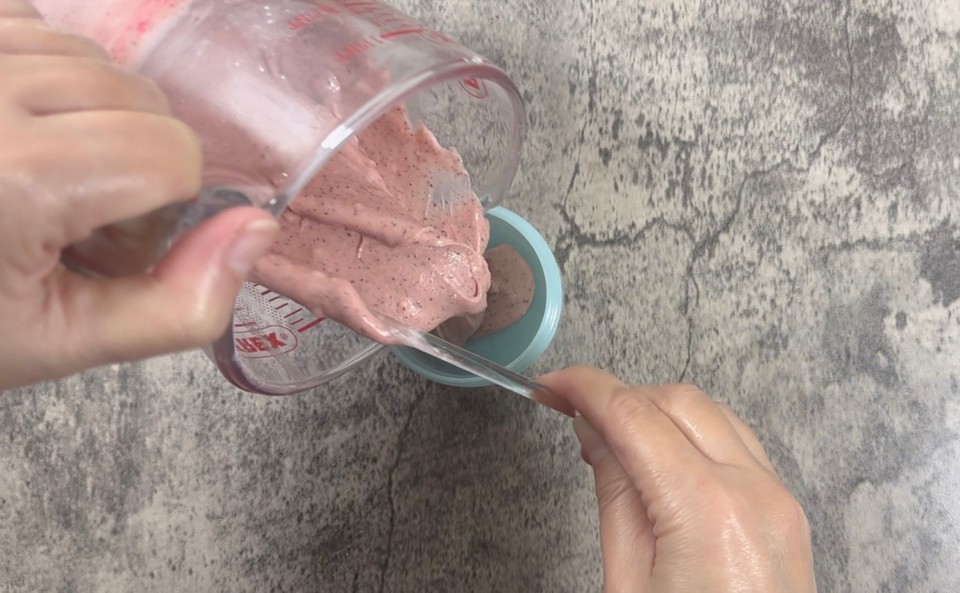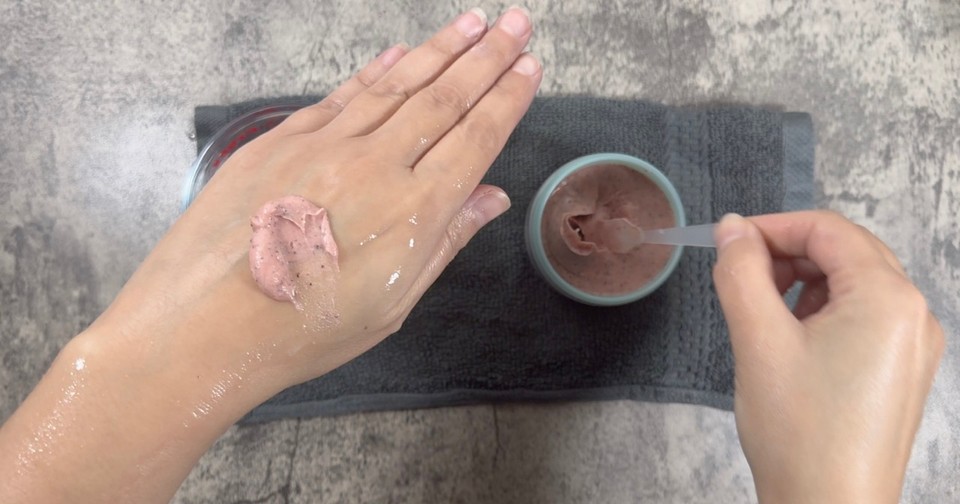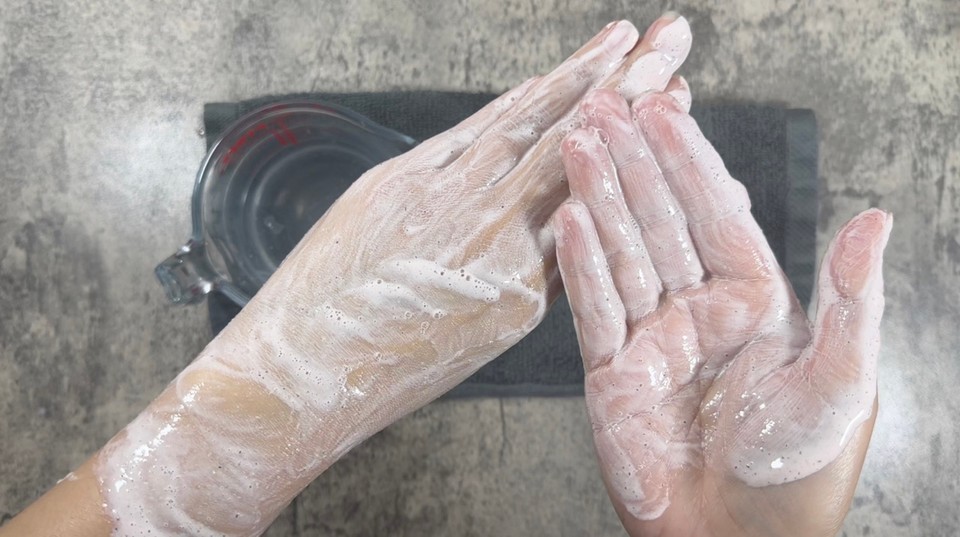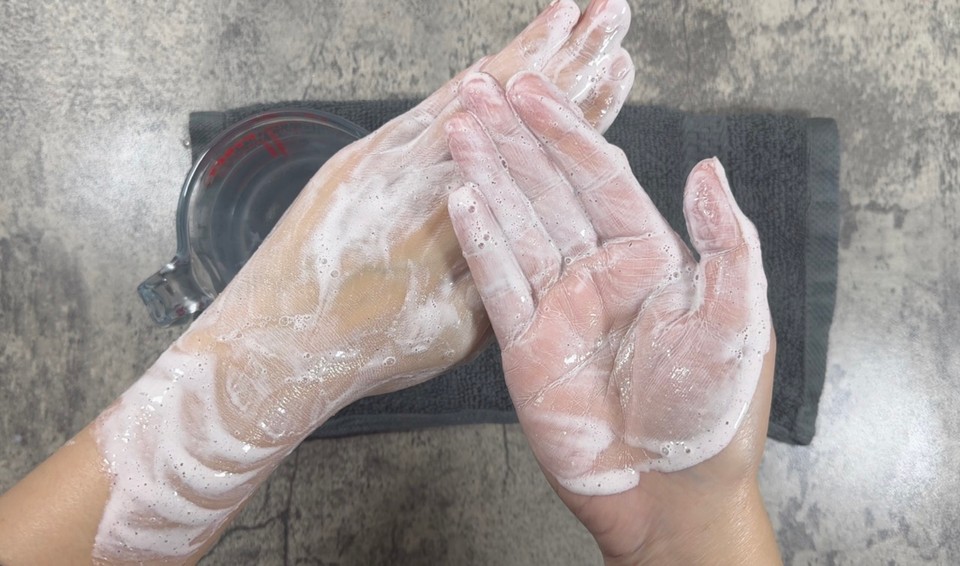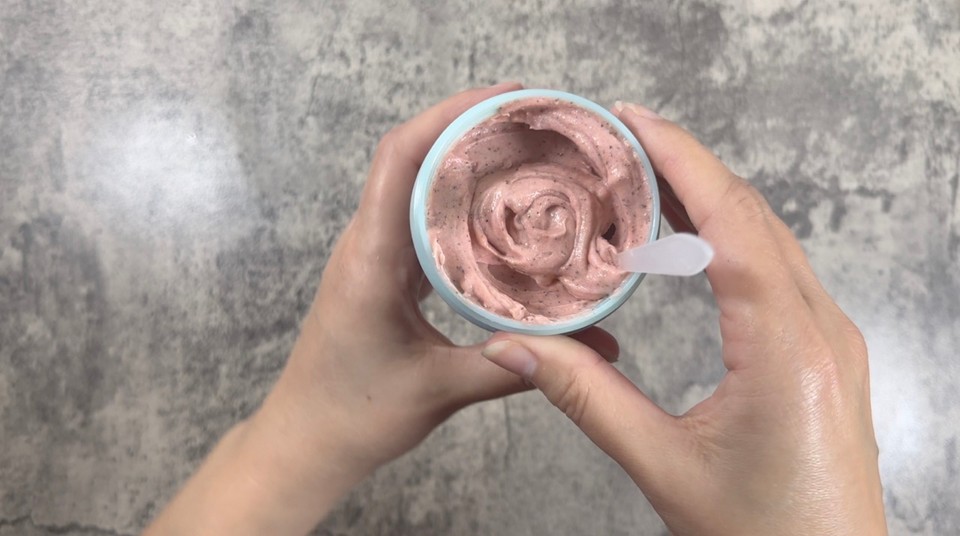Face Exfoliant Cleanser
| Phase | Ingredient | Percent (%) | Weight (g) |
|---|---|---|---|
| Phase A | Olivem1000 (Emulsifying wax) | 10 | 10 |
| Shea butter | 4 | 4 | |
| Hazelnut oil (infused with alkanet root) | 39 | 39 | |
| Phase B | Jojoba oil | 7.5 | 7.5 |
| Salicylic acid | 0.5 | 0.5 | |
| Phase C | Colloidal oats | 10 | 10 |
| Kaolin clay | 10 | 10 | |
| SCI | 10 | 10 | |
| Bamboo powder (Bambusa arundinacea stem powder) | 2 | 2 | |
| Olive pit powder | 1 | 1 | |
| Strawberry extract powder | 2 | 2 | |
| Grape seed powder | 1.5 | 1.5 | |
| Phase D | Preservative (Cosgard) | 0.8 | 0.8 |
| Fragrance oil (strawberry) | 1 | 1 | |
| Vitamin E | 0.7 | 0.7 |
This is my to-go facial exfoliator cleanser for cold, dry weather times.
This formula has no water-based ingredients, so this facial exfoliator is super creamy and silky.
Phase A is the oil-based ingredients.
I use hazelnut oil infused with alkanet root powder for the liquid oil. The color of the infused oil adds an extra pinkish tint to the final product, and the alkanet root powder is known for its antimicrobial properties. Oils infused with alkanet are soothing to the skin.
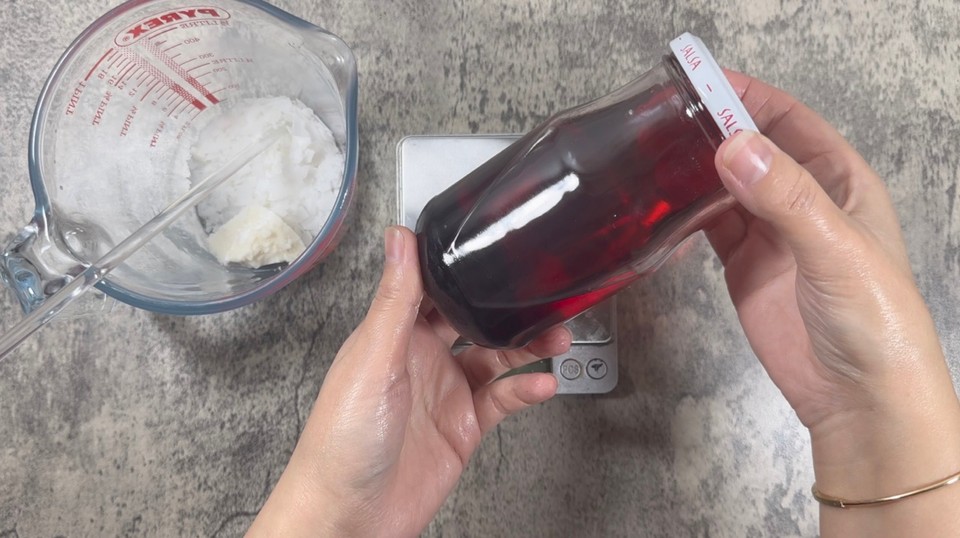
You can use your preferred oil infusion or not infused carrier oil (such as sunflower, argan, grapeseed, sweet almond, or rice bran oil).
You can read this post on infusing oils.
I add emulsifying wax to the formula to give my final product creamy consistency. I use Olivem100, which is known for its moisturizing benefits. You can swap it with other emulsifying wax (such as Ritamulse SCG, Polawax, Natragem EW, Montanov L, Montanov 68, and Lanette® N).
For butter, I use shea butter. I use the unrefined version. You can swap the shea butter with mango butter or cupuacu butter.
Phase B is jojoba oil mixed with salicylic acid.
I love combining acids in my facial care routine. I thought of a way to add salicylic acid to my face wash, and I decided to make this facial exfoliator cleanser containing salicylic acid.
Salicylic acid helps control excess sebum production, which can prevent acne.
Salicylic acid is insoluble in water; therefore, I dissolve it in jojoba oil. You can replace the jojoba oil with castor oil.
Phase C contains exfoliating and cleansing ingredients.
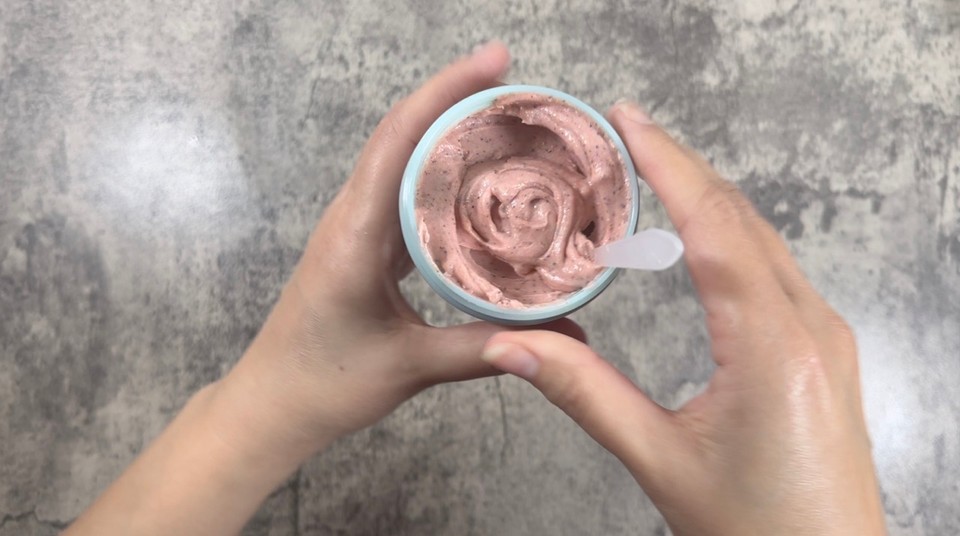
Colloidal oatmeal makes a great scrub. Colloidal oats have the power to cleanse, tone and tighten skin.
If you are concerned with gluten contamination with oats, replace the colloidal oatmeal with calendula-dried flowers (or rose petals) ground to a fine powder. Make sure to grind it to a very fine powder before adding it to the product. You can grind it using a coffee grinder.
Next, we have kaolin clay. Kaolin absorbs sebum and prevents pore clogging. It draws out impurities and toxins from the pores. Kaolin clay is mild and gentle, making it ideal for all skin types. If you don't want to use clay, you can replace the clay with cornstarch, rice starch or tapioca starch.
Bamboo powder is also an excellent exfoliate which effectively absorbs excess sebum, leaving the skin feeling soft. It has antibacterial properties and helps combat acne. Instead, you can use fine pumice powder (superfine for face exfoliant) or jojoba beads.
I use olive pit powder which you can replace with almond shell powder, red sandalwood powder or walnut shell powder.
The grape seed powder you can replace with strawberry seeds or jojoba beads.
For the cleansing properties of this product, I use SCI (sodium cocoyl isethionate), a very mild surfactant. If you only have SCI noodles, you can ground them into a powder.
You can swap the SCI with Disodium Cocoyl Glutamate, SLSA (INCI: Sodium Lauryl Sulfoacetate), Sodium Lauroyl Glutamate or Sodium Myristoyl Glutamate.
Remember to use a respiratory mask while working with fine powders.
To phase B, I also add strawberry extract powder. This powder gives a pink color to the final product. Strawberry powder extract contains vitamin C and polyphenols. Packed with fruit enzymes and AHAs, it brightens and smoothes the skin.
You can replace it with acai extract powder, dragon fruit extract powder, mulberry extract powder or raspberry extract powder.
If you can't find any fruit extract powder, you can use madder root powder or pink french clay.
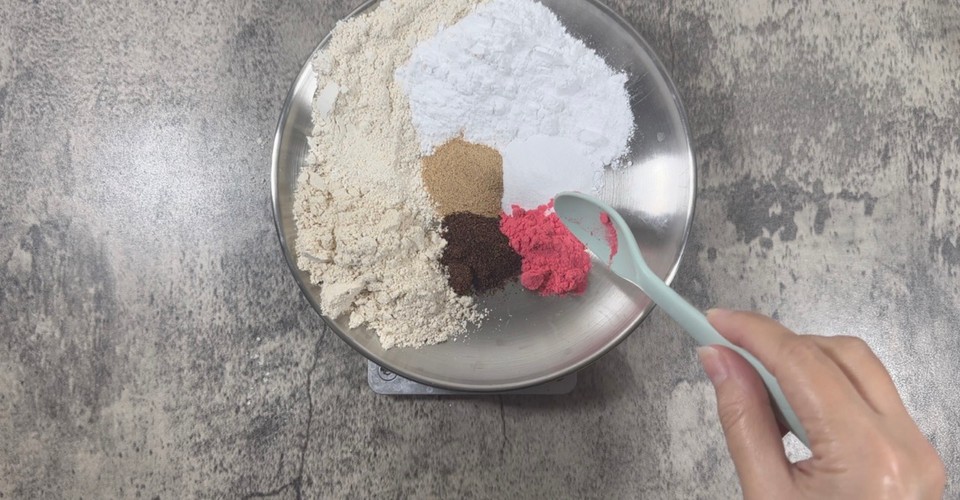
Phase D contains fragrance oil (I use strawberry fragrance oil) which you can replace with an essential oil such as lavender, geranium, rose or palmarosa. If you prefer to make an unscented product, skip the fragrance oil and add 1g to the liquid oil.
I added preservatives to this formula, although this is an oil-based formula. I added the preservative because this product will most likely be placed next to the sink or in the shower so that it could be contaminated with water and exposed to bacteria.
I use Cosgard as my preservative. If you use different kinds of preservatives, please use it according to the supplier's instructions.
The last ingredient in phase D is vitamin E. vitamin E in cosmetics helps protect the formula from oxidation.
The final product will have a thick cream, almost paste consistency. The best way to use it is with a spoon or a little wooden stick to scoop some of the product out.
Method:
- In a heat resistance container, add phase A ingredients.

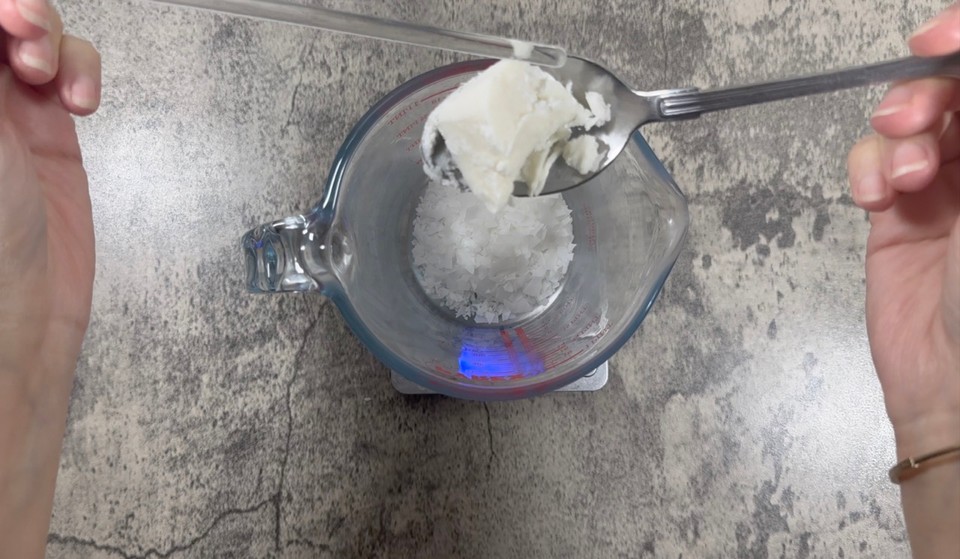
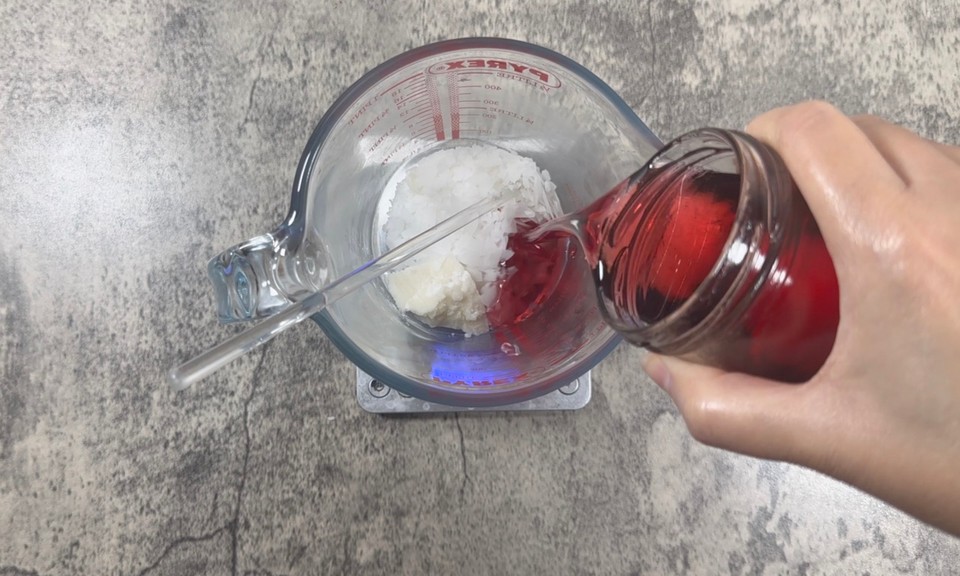
- Place phase A into a double boiler on medium heat to melt all the ingredients.
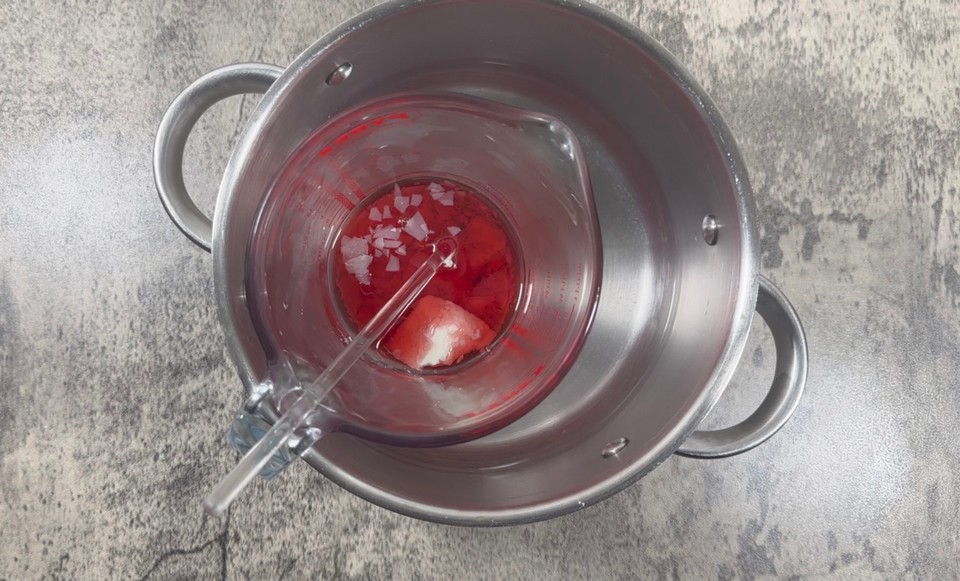
- Prepare phase B in a different container. Add the jojoba oil and then the salicylic acid and mix.
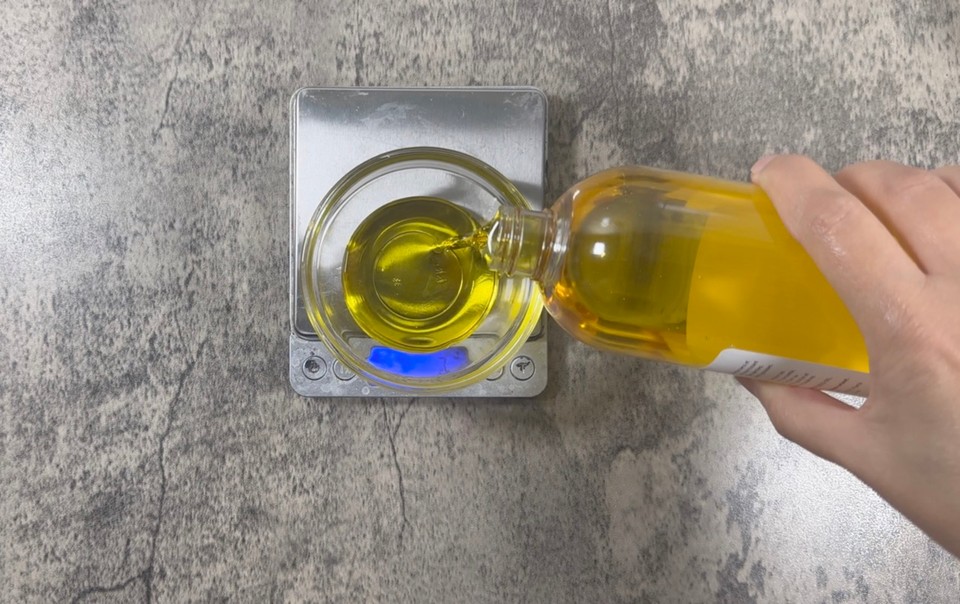
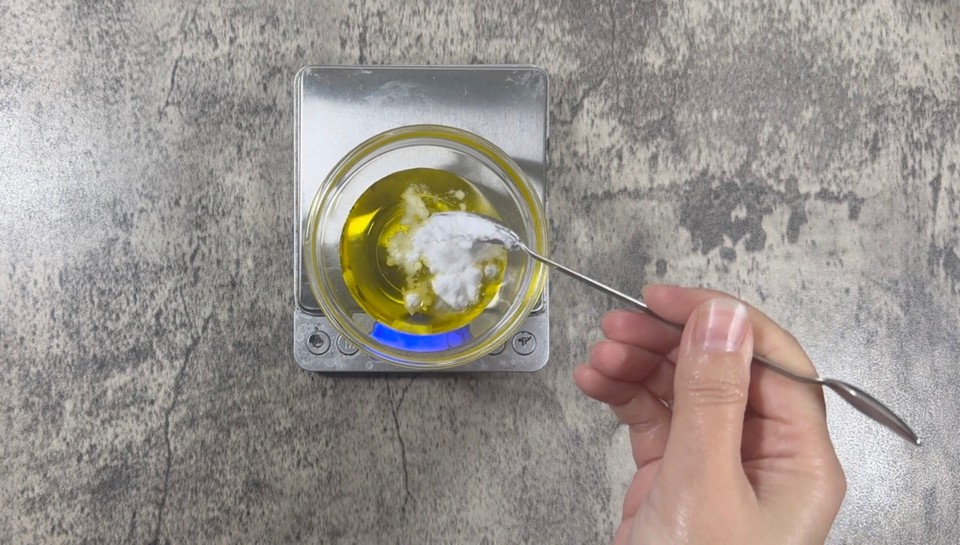
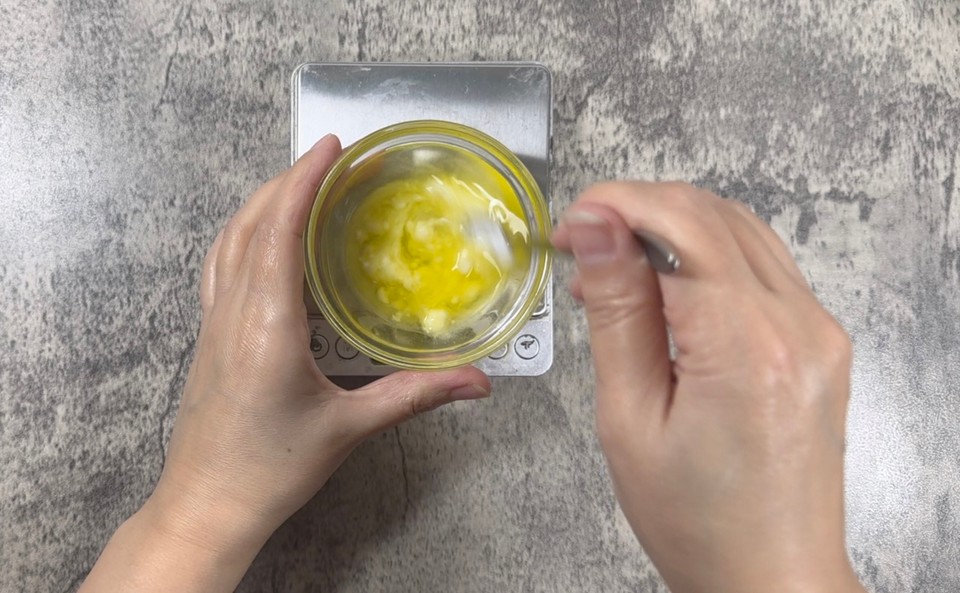
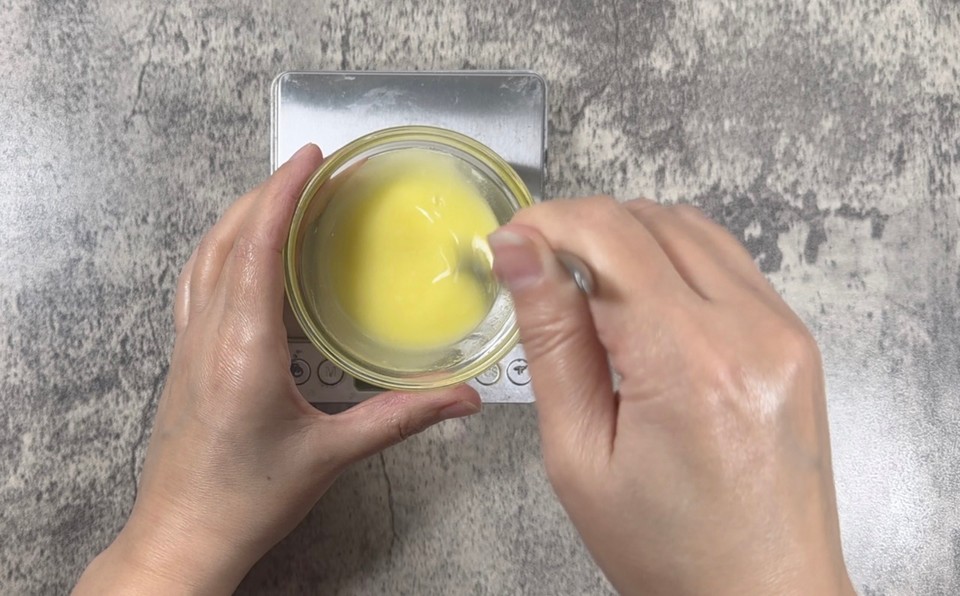
- Prepare phase D. Add all ingredients to a container and set aside.
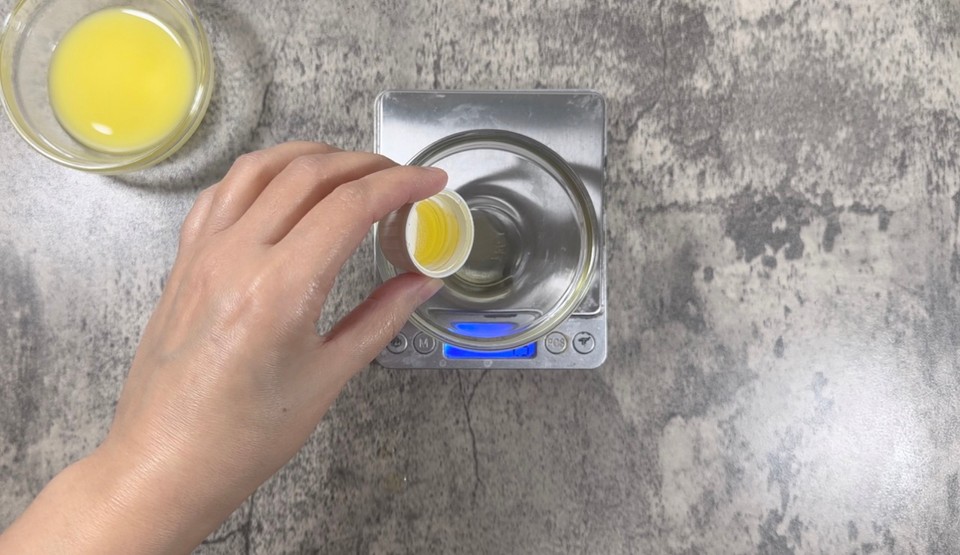
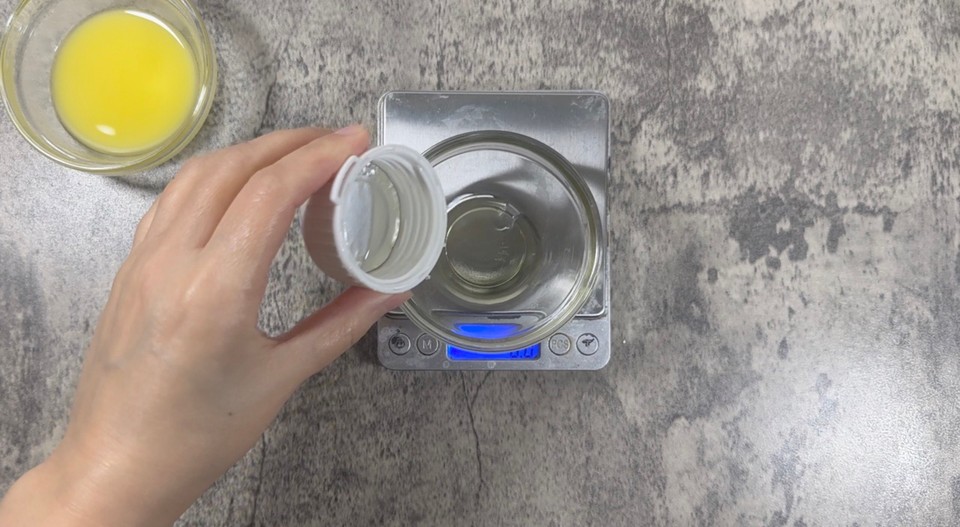

- Prepare phase C. Place all ingredients together.

- Remove phase A from the heat when everything is melted.
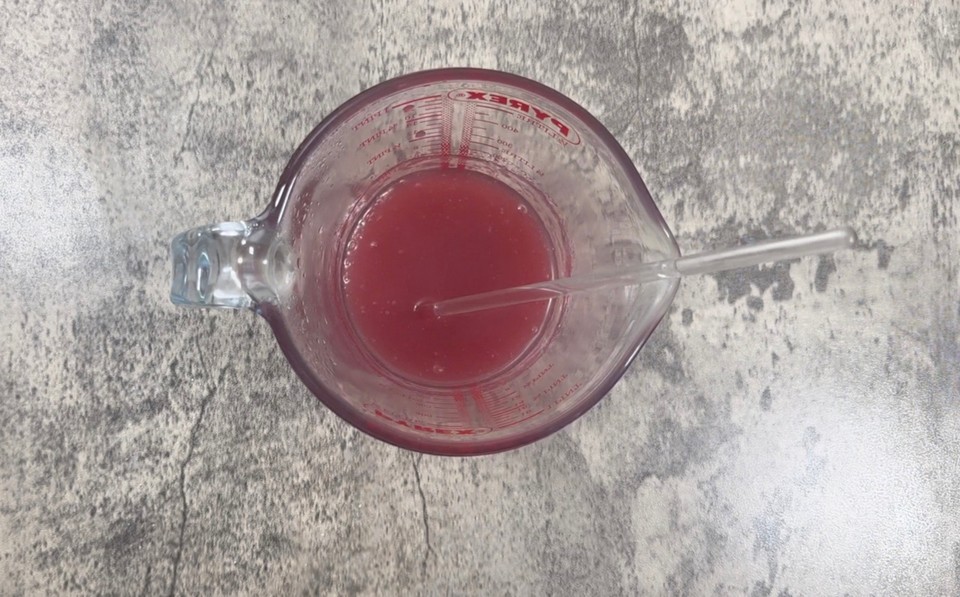
- Add phase C to phase A and mix to combine.
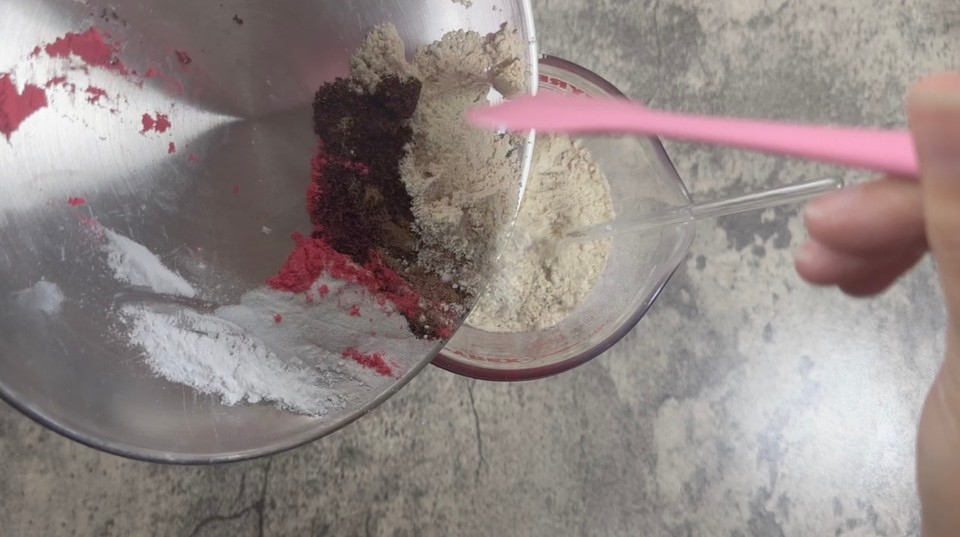
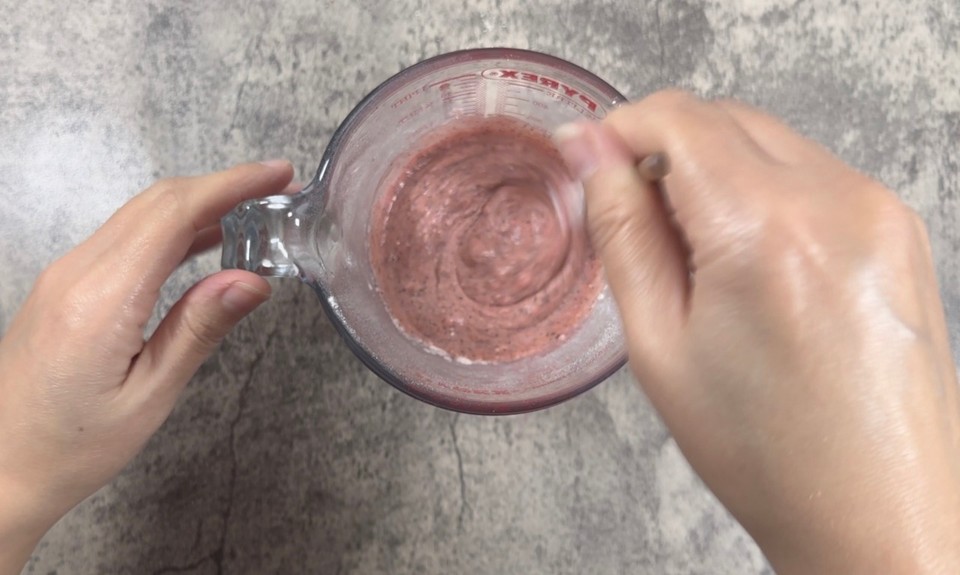
- Add phase B and mix to combine.
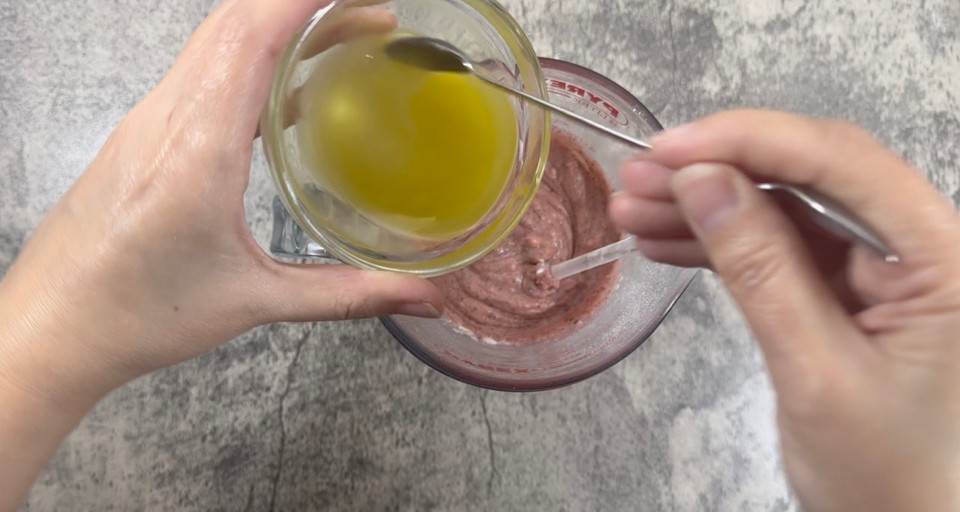
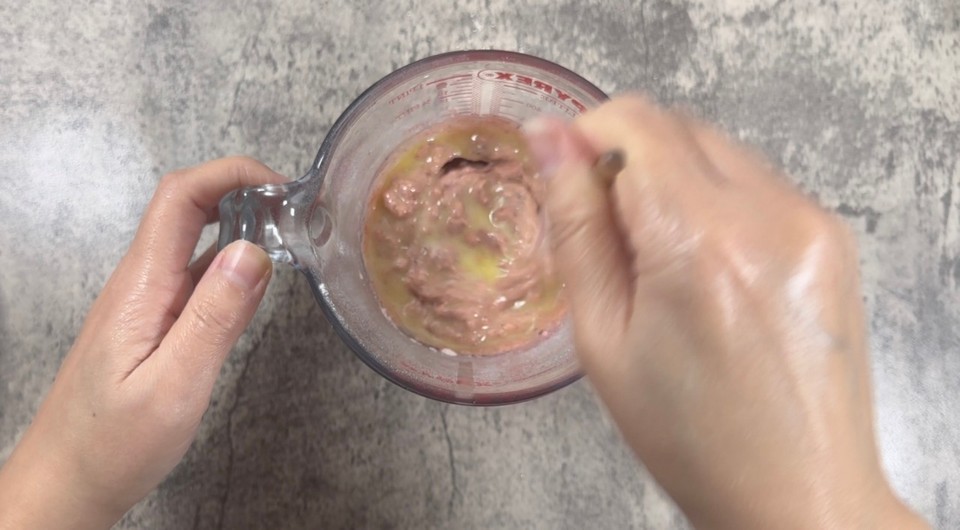
- When the temperature is less than 40 degrees Celsius, add phase D and mix to combine.

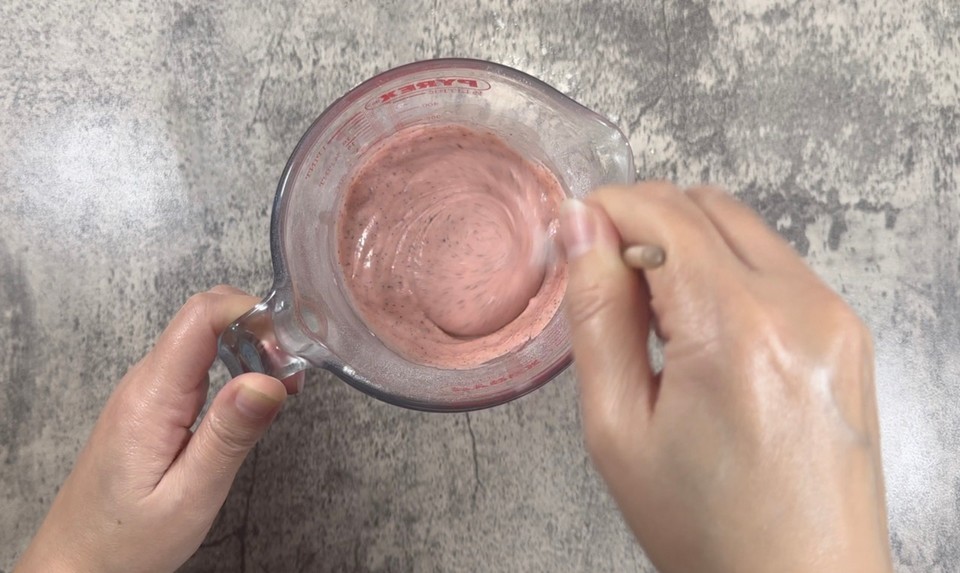
- The face exfoliate cleanser is ready. Pour into a container. Use a small spoon or a wooden stick to scoop a small amount, apply on damp skin and use circular motions to scrub and cleanse. Wash with water. After a few hours, the face exfoliate cleanser will take a tick paste consistency.
